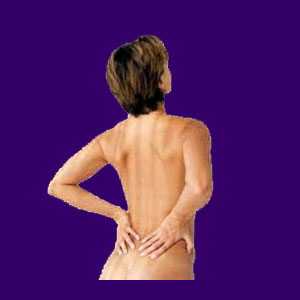
Piriformis treatment is offered in a great diversity of therapy approaches encompassing the medical and complementary sectors of healthcare. Many patients with sciatic nerve pain that has previously been diagnosed as coming from some other spinal condition have been re-diagnosed as suffering from piriformis-related pain. This is common in medicine, as if to say: “We got it wrong the 1st time, but we figured it out now.” Unfortunately, treatment statistics show that this subsequent diagnosis is also often incorrect, or only partially correct, since the true reason why the piriformis muscle has trapped the sciatic nerve is often never discovered.
This dialog analyzes the efficacy of the most common treatments offered for piriformis syndrome and addresses why curative results are so poor for virtually all of them.
Need for Piriformis Treatment
If your diagnosis has been changed to suddenly reflect piriformis-related pain, don’t jump on board and rush into therapy just yet. If your doctor got it wrong the first time, what makes you think they have it correct now?
The piriformis syndrome diagnosis is a common afterthought applied to diagnosed sciatica pain conditions that have not responded well to traditional treatment. Many patients originally thought to be victims of sciatica from a herniated disc, or other causation, go through a regimen of treatments without finding any relief. They are often referred to a new doctor or even re-diagnosed by their original doctor as suffering from possible piriformis syndrome symptoms.
Occasionally, piriformis syndrome is the original diagnosis, especially when no other apparent cause is available in the spine. This case is rare, but it does occur in some patients.
Piriformis Muscle Treatment Options
The usual treatments for piriformis syndrome mimic those for most lower back and buttock pain conditions. Not all common therapy modalities make any sense for the suspected cause of pain, but are used nevertheless. This is business as usual in the back pain treatment industry:
Exercises and stretches are often employed as part of a physical therapy routine.
Ice and heat are alternated to determine which provides greater relief to the patient and when.
Pain management drugs are used depending on the severity of the symptoms.
In rare cases of unresolved pain, piriformis surgery is sometimes a final option used for providing relief.
Complementary medicine takes an active role in piriformis care, as well. Chiropractic, massage and acupuncture are some of the most common of all alternative treatment regimens for piriformis syndrome.
While all of these treatments pre-suppose some structural reason for the piriformis to compress the sciatic, this actual reason is almost never discovered.
Piriformis Syndrome Treatment Conclusion
Piriformis syndrome represents a leap forward in some respects compared to traditional sciatica explanations. The spine and its typical scapegoat explanations are left completely out of the equation. This is a good thing, since so many structural issues in the lumbar area are simply nothing more than normal spinal degeneration and have been proven to not cause pain in the majority of patients demonstrating them.
However, the mechanism for piriformis syndrome is usually theorized to be enacted due to injury, which seems so far-fetched for most patients. Sure, if a known injurious event has occurred, this is a different story, but even then, why would the muscle continue to be tight and constrictive months or years after the trauma has healed? This is where the piriformis treatment sector loses it way.
Ischemia seems to be a more logical explanation, so it is no wonder that innovators like Dr. John Sarno have received such praise for speculating that it is the true source process responsible for the piriformis syndrome symptom set. Oxygen deprivation makes sense in almost every case and when targeted for treatment, will often resolve the condition entirely.





